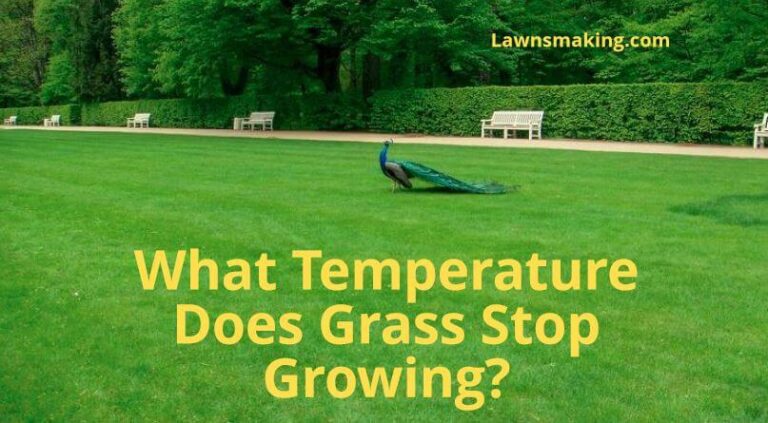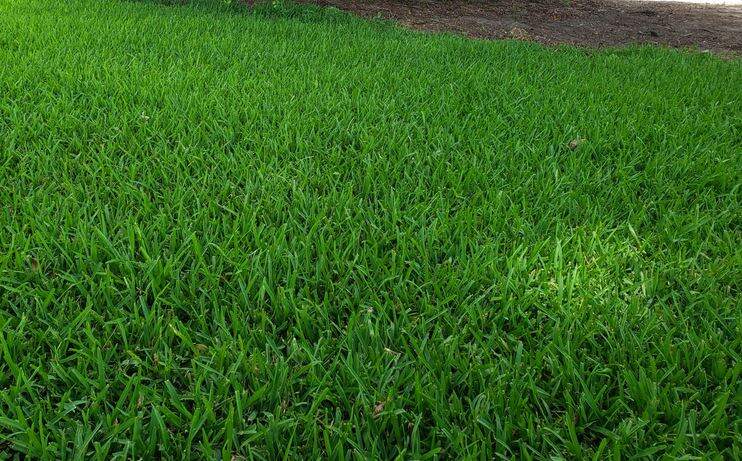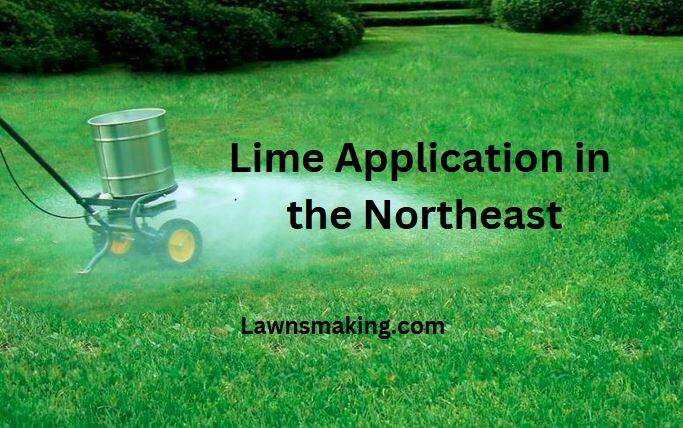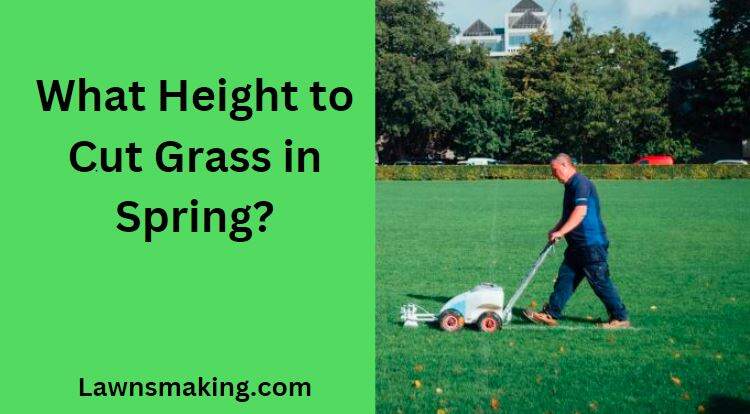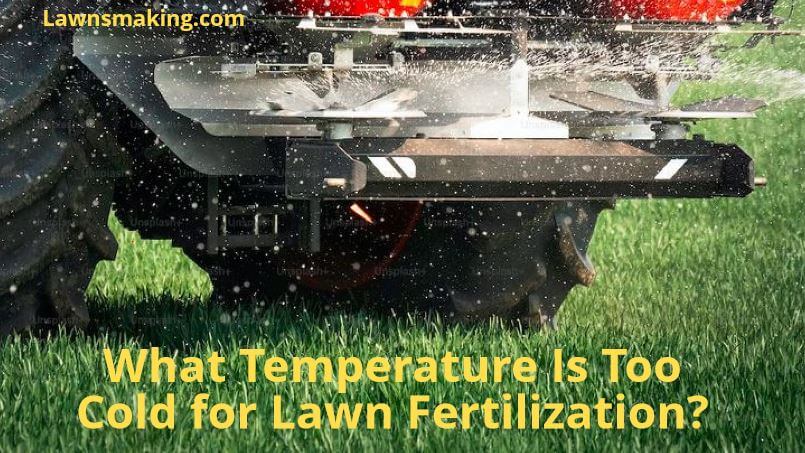
Applying fertilizer during frigid temperatures proves futile and may damage your lawn, leaving it vulnerable to winter stress. To empower you with the knowledge needed to maintain a healthy lawn, we will explore the critical question, “What temperature is too cold to fertilize lawn areas?”
You should not fertilize your lawn when soil temperatures drop below 40°F (4.44°C). Fertilizing in freezing conditions can lead to poor nutrient uptake, weakening the grass, leaving it vulnerable to disease and stress, and potentially harming your lawn.
In the rest of this article, I’ll explore topics ranging from the significance of understanding lawn fertilization to critical considerations for fertilizing the lawn during transitional seasons. You need this information to ensure your lawn receives the care it needs for healthy growth.
What Is the Significance of Understanding Lawn Fertilization?
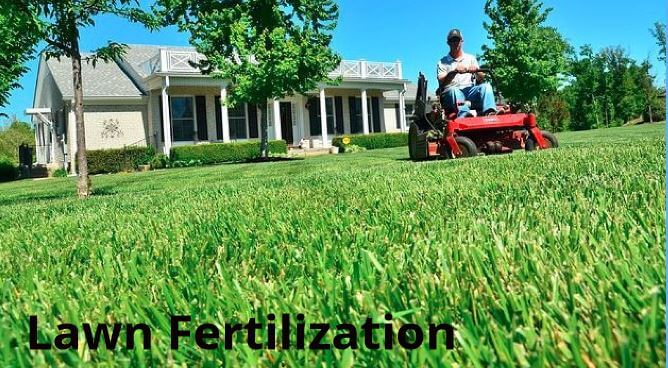
You play a critical role in nurturing a healthy and vibrant lawn, and understanding the significance of lawn fertilization is vital to achieving your greenery goals.
Lawn fertilization involves the application of essential nutrients to your soil and grass to enhance growth and boost overall health.
Giving your lawn much-needed nutrients improves its density, resilience, and color, contributing to its beautiful and lush appearance.
Fertilizers have a mixture of key ingredients, the most common being potassium, phosphorus, and nitrogen. Each of these nutrients has a distinct role in promoting the growth and development of your grass.
- Nitrogen (N): Primarily responsible for enhancing leafy growth, nitrogen allows your grass to develop vibrant and strong leaves.
- Potassium (P). This nutrient is vital as it supports different physiological processes within the plant, including drought tolerance and pest or disease resistance.
- Phosphorus (K): Phosphorus improves overall plant vigor. This nutrient also helps your grass develop healthy, deep roots to survive environmental challenges and stress.
Landscapers and homeowners who understand these nutrients can choose the right lawn fertilizer.
Examining the role of temperature in lawn fertilization will help us remember that these ingredients interact with soil and grass in different ways depending on prevailing temperature conditions.
What is The Role of Temperature in Lawn Fertilization?
Temperature influences the effectiveness of lawn fertilization by dictating how plants absorb and use the essential nutrients in fertilizers.
While the relationship between temperature and plant nutrient uptake is complex, understanding it will help you make informed decisions about the timing and how to fertilize your lawn.
Plants have reduced nutrient uptake when the soil temperature is too low. It is essential to understand this, especially when discussing nitrogen since cold soil slows the conversion of nitrogen into forms the plant needs and can readily use.
Consequently, fertilizer application in freezing conditions may not yield favorable results and can even result in nutrient runoff.
The release of nitrogen occurs more rapidly in warmer weather conditions, but it significantly decelerates as soil temperatures decrease to approximately 40°F (4.4°C). Consequently, your grass plants will be better equipped for nutrient absorption and utilization when the soil temperatures are within the optimal range.
Comparison Between Lawn Fertilizers
Here is a table that you can use as a quick reference guide for identifying and selecting the right fertilizer for your lawn based on your region’s prevailing temperature conditions.
Please remember to read/check specific product labels for detailed instructions.
| Fertilizer Type | Notes/Recommendations |
| Granular | Granular fertilizers are effective during the warm season. Avoid use in extreme heat. |
| Liquid | Liquid fertilizers can be applied in a broader temperature range but are often best during moderate temperatures. |
| Organic | Organic fertilizers work well in a wide temperature range and are gentle on lawns. |
| Synthetic | Synthetic fertilizers are effective during the growing season but can release nutrients quickly in high heat. |
| How to select the right fertilizer for your lawn |
Ideal Temperatures for Lawn Fertilization
Lawn fertilizers have varying ideal temperatures for application. Therefore, getting acquainted with the ideal temperature ranges for each season will help you make informed choices on the best fertilizer to use on your lawn.
Timing fertilizer applications based on prevailing temperature conditions can impact the effectiveness of your grass’s nutrient uptake.
Here is a table to help you plan a lawn fertilization schedule based on each season’s optimal temperature ranges.
| Season | Optimal Temperature Range | Recommended Fertilization Schedule |
| Spring | 55°F to 65°F (13 to 18)°C | Early to mid-spring: Apply a balanced fertilizer with NPK. This promotes vigorous growth as the grass awakens. |
| Summer | 70°F to 85°F (21 to 29)°C | Late spring to early summer: Use a slow-release fertilizer to sustain nutrient availability during the growing season. |
| Fall | 55°F to 65°F (13 to 18)°C | Late summer to early fall: Apply a fertilizer higher in phosphorus to support root development and winter hardiness. |
| Winter | Below 40°F (4)°C | Avoid fertilization during winter since the grass is dormant and doesn’t actively grow in these conditions. |
Risks of Fertilizing a Lawn in Cold Weather Conditions
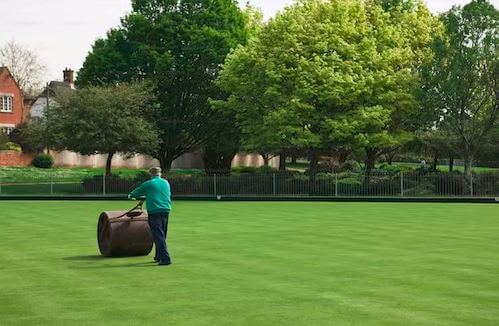
It’s advised not to apply nitrogen to lawns under summer dormancy or on frozen surfaces in winter. Fertilizer application in cold weather is mostly counterproductive. Some of the risks of fertilizing a lawn in freezing weather include:
- Inefficient nutrient uptake: As discussed earlier, cold soil discourages efficient nutrient uptake. This can lead to poor nutrient utilization and ineffective fertilization.
- Nutrient loss: Cold weather increases the chances of nutrient runoff due to frozen soils. Fertilizers may not be effectively absorbed by the grass—leading to excess nutrients finding their way into waterways, and this can potentially harm the ecosystem.
- Root damage: Grass roots can experience stress when the soil is cold, making them more prone to damage. Moreover, fertilizer application in these conditions can further weaken your grass’s root system.
Fortunately, you can mitigate these challenges by taking specific precautions when applying fertilizer in cold weather.
First, you can choose the right fertilizer. Second, you can adjust the fertilizer application rate. Additionally, you could monitor the soil temperature before fertilizer application.
When Is the Best Time to Fertilize a Lawn in the Spring Season?
The best time to fertilize a lawn in the spring season is when the temperature falls between 60 and 70°F (15.56 and 20.00°C). However, your region of residence and prevailing climatic conditions will dictate the timing of nutrient application.
Please note that spring fertilization will guide you through preparing your lawn for the upcoming warmer months—stressing the importance of choosing the right time for fertilizer application.
When Is the Best Time to Fertilize a Lawn in the Fall Season?
The best time to fertilize a lawn in the fall season is when the temperature lies between 50 and 65°F (10 and 18℃). Nevertheless, the prevailing climatic conditions in your region can dictate the specific timing of nutrient application to your lawn.
Fall is another excellent time for lawn fertilization, and it allows landscapers and homeowners to prepare their lawns for the upcoming winter.
Additionally, fertilizer application in late fall helps your grass build up adequate nutrient reserves, increasing its resilience to cold weather stress while facilitating early green-up in spring.
Besides setting the stage for lush growth in spring, remember that maximizing nutrient uptake during this season will allow your lawn to remain vibrant and healthy throughout the freezing winter.
Tools for Monitoring Soil Temperature
You need to make informed decisions on when to fertilize your lawn. Therefore, it is essential to monitor soil temperature accurately.
As discussed earlier, soil temperature plays a significant role in determining the effectiveness of your grass’s nutrient uptake.
There are numerous soil temperature measuring tools, and the best ones include digital soil temperature probes and handheld thermometers.
Here is how to use these tools for effective soil temperature monitoring:
- Digital soil temperature probe: Insert the probe into the soil at the desired depth and wait for a stable reading, usually within a minute or two. Take measurements at various locations for comprehensive data.
- Handheld thermometers: Push the thermometer’s probe into the soil at the desired depth. Allow a few minutes (about 5) for the temperature reading to stabilize. Take measurements at different spots for accurate results.
How to Fertilize a Lawn Successfully in Cold Weather
You need to make careful considerations and pay close attention to detail if you will be fertilizing your lawn in cold weather.
To achieve perfect results, consider the following tips from seasoned horticulturalists and lawn experts:
- Adjust the watering schedule: it will help to ensure your lawn receives adequate moisture during cold weather fertilization. However, it’s not just about watering; it’s about when you water.
Watering your lawn in the morning is always best during cold weather. This allows the grass to absorb moisture before the temperatures drop in the evening.
Also, avoid watering when temperatures are near freezing (32°F (0°C) to 35°F (1.7°C), as this can lead to frost damage on the grass blades.
- Cover sensitive plants: Does your lawn have sensitive plants like Basil or Vinca minor? If your answer is yes, consider covering them to prevent them from coming into contact with the fertilizer during fertilizer application.
- Choose slow-release fertilizers: Please opt for slow-release fertilizers. These fertilizers will slowly and gradually release their nutrients, providing your lawn with a steady supply of vital minerals, even in cold weather.
- Clean up excess fertilizer: Clean your equipment thoroughly after fertilizer application. This will prevent contamination and help with proper storage.
Adhering to the above best practices will help protect your lawn while optimizing your fertilizer application efforts in cold and chilly weather.
How to Fertilize Lawns in Transitional Seasons
Like early spring, late fall is also a transitional season. Here are vital fertilization tips for each season:
- Early Spring: Only apply fertilizer when soil temperatures are within the optimum range, typically between 50 and 65°F (10 and 18.33°C). This will facilitate early-season growth and also prepare your lawn for the growing season.
- Late Fall: Fertilizing your lawn in late fall will help your grass build the needed nutrient reserves for winter while improving root growth. Note that timing is important, especially if you want your grass to absorb and store nutrients effectively during cold months.
With these seasonal tips, you can adapt and optimize your fertilization efforts to the changing conditions that manifest during transitional seasons—ultimately enhancing your lawn’s vitality and health.
So, What Temperature Is Too Cold to Fertilize Lawn Areas?
Homeowners and landscaping enthusiasts need to realize that being acquainted with the optimal conditions for fertilization is critical. Fortunately, you now have an answer to the question, “What temperature is too cold to fertilize lawn areas?”
After exploring the optimum temperature limits for effective and efficient lawn fertilization, it will help to remember that lawn fertilization is unnecessary once the soil temperature falls below 40°F (4.44°C).
Fertilizer application when the soil temperature is below 40°F can be detrimental to the health of your lawn.
Meanwhile, fertilizing your grass during optimal temperatures will help you nurture a healthy and vibrant lawn that thrives all year round.

